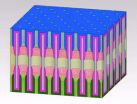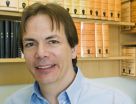(Press-News.org) LA JOLLA, CA--November 10, 2014--Chemists at The Scripps Research Institute (TSRI) and the Shanghai Institute of Organic Chemistry have described a method for creating and modifying organic compounds that overcomes a major limitation of previous methods. The advance opens up a large number of novel chemical structures for synthesis and evaluation, for example, as candidate pharmaceuticals.
The new method was designed to avoid an unwanted side effect--a diversion of a catalyst molecule to the wrong location--that prevents chemists from manipulating many organic compounds in the class known as heterocycles, which are commonly used as drugs.
The newly described technique gets around this obstacle by generating a reactive catalyst at precisely the desired site on a molecule to be modified.
"We have already applied this technology to enable the modification of a wide range of chemical structures, including a complex drug candidate being developed by a major pharmaceutical company," said Jin-Quan Yu, professor of chemistry at TSRI.
Yu and his colleagues describe the new method in a paper published by the journal Nature on November 10, 2014.
Small Changes with Big Consequences
Heterocycles have the basic carbon-ring structures of other organic compounds, but with one or more of the carbon atoms replaced by a different atom, such as nitrogen or sulfur. Such a seemingly slight change can radically alter the properties of a compound--conferring greater solubility, for example, which is why heterocyclic structures are often preferred in modern synthetic drugs and also are found frequently in natural compounds that are used as drugs.
But heterocycles pose a particular challenge for those who would modify them. In the pharmaceutical industry, for example, chemists typically select a compound that has a desired chemical activity and then attempt to "tweak" it in various ways to optimize its properties and perhaps create useful new properties. The fastest way to do this is by removing a hydrogen atom from one of the compound's backbone carbon atoms and replacing it with a new functional group.
Chemists in recent years have devised various techniques to make this basic type of modification, known as C-H functionalization or C-H activation. Yu's laboratory has been responsible for some of the more powerful ones. But C-H activation techniques generally rely on the use of a metal-containing catalyst molecule to cleave a carbon-hydrogen bond to make way for the new functional group. In heterocycles, a "hetero" (non-carbon) atom such as nitrogen is apt to draw the catalyst away from the targeted C-H bond, thus preventing the desired modification.
"This detrimental effect seriously limits the diversity of drug candidates that can be made via C-H activation reactions," said Yu.
The Right Place at the Right Time
In the new study, Yu's group, working with collaborators in the laboratory of Hui-Xiong Dai (a former member of the Yu group at TSRI) at the Shanghai Institute of Organic Chemistry, found a way around this problem.
The key to their solution is a molecule that Yu and his TSRI colleagues first described in a 2008 paper, a "directing group" derived from carboxylic acid and known as an N-methoxy amide.
Normally, a directing group facilitates a C-H activation by helping a new functional group into the correct position. In this case, the directing group also reacts with a supplied palladium-containing molecule and oxygen from the air to make the desired palladium catalyst.
"In other words, the directing group generates the catalyst just where it should be on the structure, and at a safe distance from any heterocyclic atom, such as nitrogen, to which the catalyst otherwise would bind and get poisoned or activate C-H bonds at the undesired positions," said Yu.
The team demonstrated the effectiveness of the technique by using it to modify a wide variety of heterocyclic structures that are frequently present in drug molecules, including furans, benzofurans and benzothiophenes; indole, pyrrole, thiazole, pyrazole and imidazole; pyridines; quinoline, pyrazine, pyrimidine, pyrazole and thiazole. The team also used the technique as part of a simple, versatile process for making lactams, a class of heterocyclic compounds that include penicillins.
Yu and his laboratory and collaborators now hope to expand the utility of the new method and explore specific applications in drug discovery.
INFORMATION:
Co-authors of the paper, "Bypassing the Limitations of Directed C-H Functionalizations of Heterocycles," include first author Yue-Jin Liu, and Hui Xu, Wei-Jun Kong and Ming Shang, all of the Shanghai Institute of Organic Chemistry.
Support for the research was provided by the Chinese Academy of Sciences and the U.S. National Institute of General Medical Sciences (1R01 GM102265).
About The Scripps Research Institute
The Scripps Research Institute (TSRI) is one of the world's largest independent, not-for-profit organizations focusing on research in the biomedical sciences. TSRI is internationally recognized for its contributions to science and health, including its role in laying the foundation for new treatments for cancer, rheumatoid arthritis, hemophilia, and other diseases. An institution that evolved from the Scripps Metabolic Clinic founded by philanthropist Ellen Browning Scripps in 1924, the institute now employs about 3,000 people on its campuses in La Jolla, CA, and Jupiter, FL, where its renowned scientists--including two Nobel laureates--work toward their next discoveries. The institute's graduate program, which awards PhD degrees in biology and chemistry, ranks among the top ten of its kind in the nation. For more information, see http://www.scripps.edu.
Catalyst-where-you-want-it method expands the possibilities for new drug development
2014-11-10
ELSE PRESS RELEASES FROM THIS DATE:
Iron fertilization less efficient for deep-sea CO2 storage than previously thought?
2014-11-10
The Southern Ocean plays an important role in the exchange of carbon dioxide between the atmosphere and the ocean. One aspect of this is the growth of phytoplankton, which acts as a natural sponge for carbon dioxide, drawing the troublesome greenhouse gas from the atmosphere into the sea. When these plankton die they can sink to the bottom of the ocean and store some of the carbon dioxide they have absorbed, a process scientists call the "biological carbon pump".
Although many areas of the Southern Ocean are rich in nutrients, they often lack iron, which limits phytoplankton ...
Some neurons can multitask, raising questions about the importance of specialization
2014-11-10
Cold Spring Harbor, NY - Think about all the things you are doing at this moment. As your eyes scan across the lines of this article, maybe your brain is processing the smell of coffee brewing down the hall and the sound of leaf blowers outside your window. Maybe you are tapping your foot and spinning a pen between your fingers. At any given moment, your brain is simultaneously processing a multitude of information from your senses while supporting a dizzying array of behaviors.
How is all this information processed at once? The provisional answer, for decades, has centered ...
A billion holes can make a battery
2014-11-10
COLLEGE PARK, Md. -- Researchers at the University of Maryland have invented a single tiny structure that includes all the components of a battery that they say could bring about the ultimate miniaturization of energy storage components.
The structure is called a nanopore: a tiny hole in a ceramic sheet that holds electrolyte to carry the electrical charge between nanotube electrodes at either end. The existing device is a test, but the bitsy battery performs well. First author Chanyuan Liu, a graduate student in materials science & engineering, says that it can be ...
Good vibrations give electrons excitations that rock an insulator to go metallic
2014-11-10
OAK RIDGE, Tenn., Nov. 10, 2014--For more than 50 years, scientists have debated what turns particular oxide insulators, in which electrons barely move, into metals, in which electrons flow freely. Some scientists sided with Nobel Prize-winning physicist Nevill Mott in thinking direct interactions between electrons were the key. Others believed, as did physicist Rudolf Peierls, that atomic vibrations and distortions trumped all. Now, a team led by the Department of Energy's Oak Ridge National Laboratory has made an important advancement in understanding a classic transition-metal ...
Re-learning how to read a genome
2014-11-10
Cold Spring Harbor, NY - There are roughly 20,000 genes and thousands of other regulatory "elements" stored within the three billion letters of the human genome. Genes encode information that is used to create proteins, while other genomic elements help regulate the activation of genes, among other tasks. Somehow all of this coded information within our DNA needs to be read by complex molecular machinery and transcribed into messages that can be used by our cells.
Usually, reading a gene is thought to be a lot like reading a sentence. The reading machinery is guided ...
Thousands of never-before-seen human genome variations uncovered
2014-11-10
Thousands of never-before-seen genetic variants in the human genome have been uncovered using a new genome sequencing technology. These discoveries close many human genome mapping gaps that have long resisted sequencing.
The technique, called single-molecule, real-time DNA sequencing (SMRT), may now make it possible for researchers to identify potential genetic mutations behind many conditions whose genetic causes have long eluded scientists, said Evan Eichler, professor of genome sciences at the University of Washington, who led the team that conducted the study.
"We ...
Statins reverse learning disabilities caused by genetic disorder
2014-11-10
UCLA neuroscientists discovered that statins, a popular class of cholesterol drugs, reverse the learning deficits caused by a mutation linked to a common genetic cause of learning disabilities. Published in the Nov. 10 advance online edition of Nature Neuroscience, the findings were studied in mice genetically engineered to develop the disease, called Noonan syndrome.
The disorder can disrupt a child's development in many ways, often causing unusual facial features, short stature, heart defects and developmental delays. No treatment is currently available.
"Noonan ...
A greasy way to take better protein snapshots
2014-11-10
Thanks to research performed at RIKEN's SACLA x-ray free electron laser facility in Japan, the dream of analyzing the structure of large, hard-to-crystallize proteins and other bio molecules has come one step closer to reality. In the study published in Nature Methods, researchers used a newly developed grease to suspend small crystals of lysozyme, glucose isomerase, thaumatin, and fatty acid-binding protein type-3, which they then analyzed using the revolutionary serial femtosecond crystallography method.
Crystallography, which was first performed just a century ago, ...
Heat transfer sets the noise floor for ultrasensitive electronics
2014-11-10
A team of engineers and scientists has identified a source of electronic noise that could affect the functioning of instruments operating at very low temperatures, such as devices used in radio telescopes and advanced physics experiments.
The findings, detailed in the November 10 issue of the journal Nature Materials, could have implications for the future design of transistors and other electronic components.
The electronic noise the team identified is related to the temperature of the electrons in a given device, which in turn is governed by heat transfer due to packets ...
For enterics, adaptability could be an Achilles heel
2014-11-10
In research published in Nature Chemical Biology, scientists from RIKEN in Japan have discovered a surprisingly simple mechanism through which enterics can adjust to the very different oxygen environments inside the human gut and outside. This research, which was led by Shigeyuki Yokoyama and Wataru Nishii of the Structural Biology Laboratory, opens a new potential target against these bacteria, which are the most-frequently encountered causative microorganisms of infectious diseases. The family includes well-known symbionts and facultative or obligate pathogens such as ...







